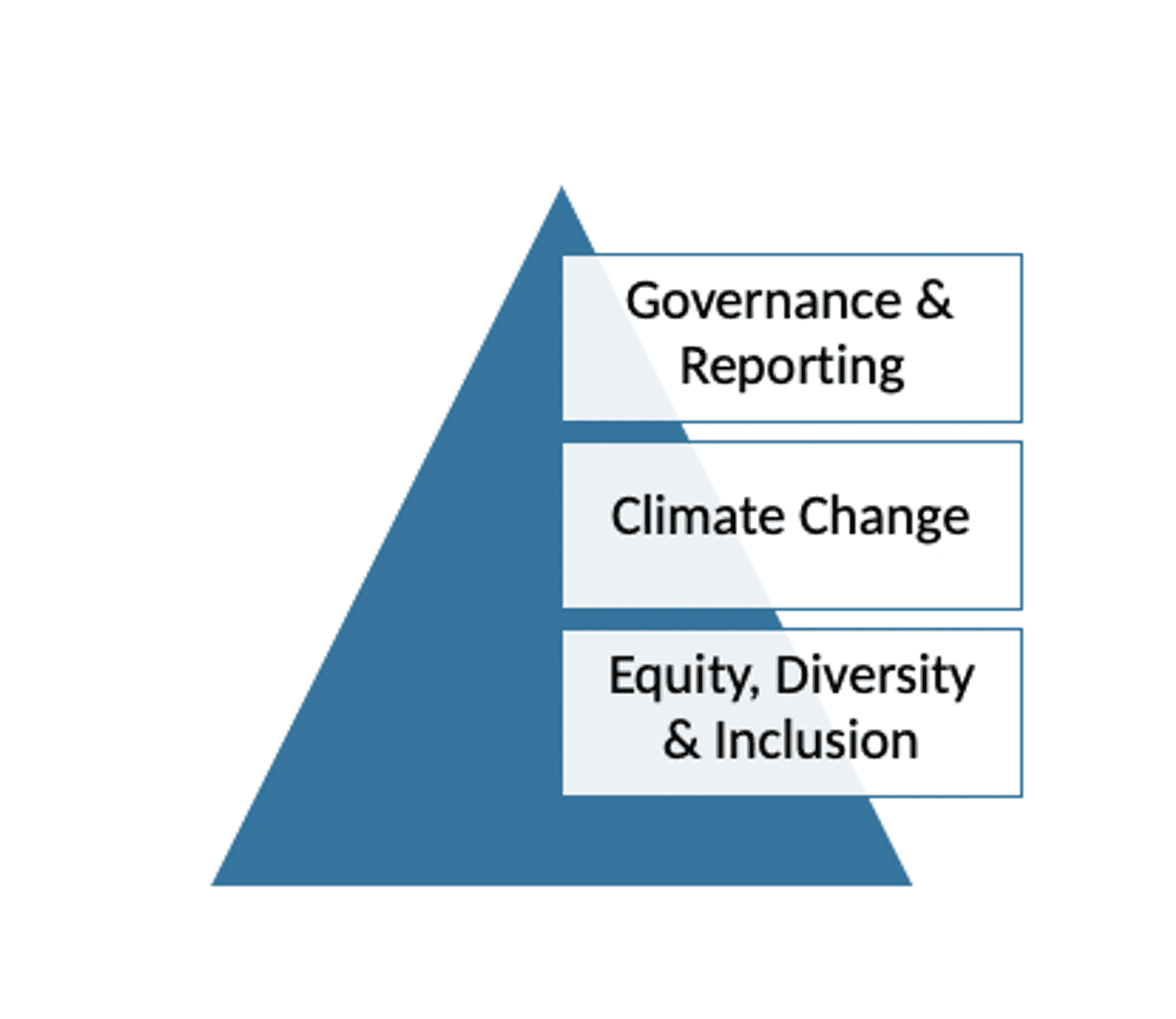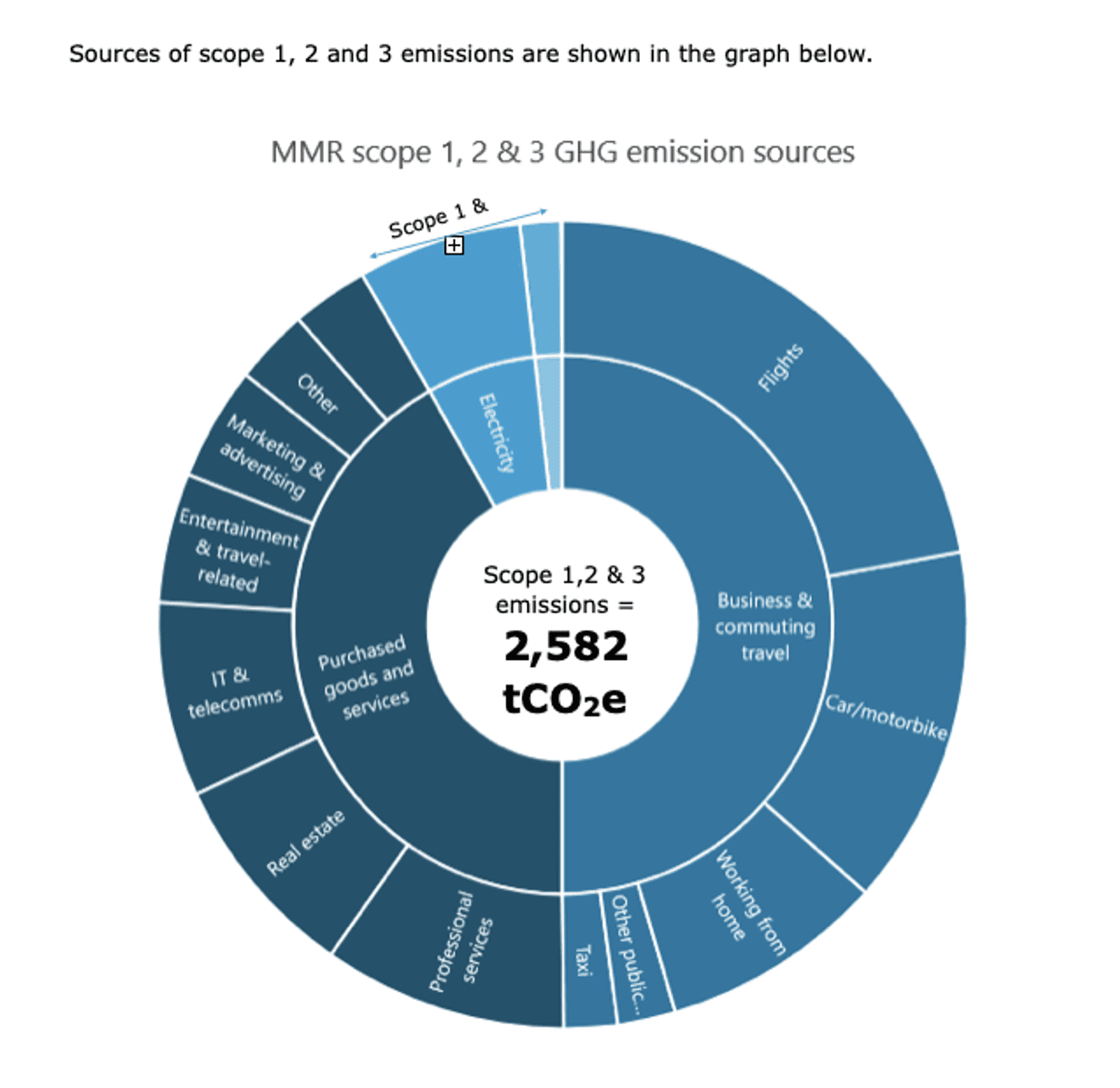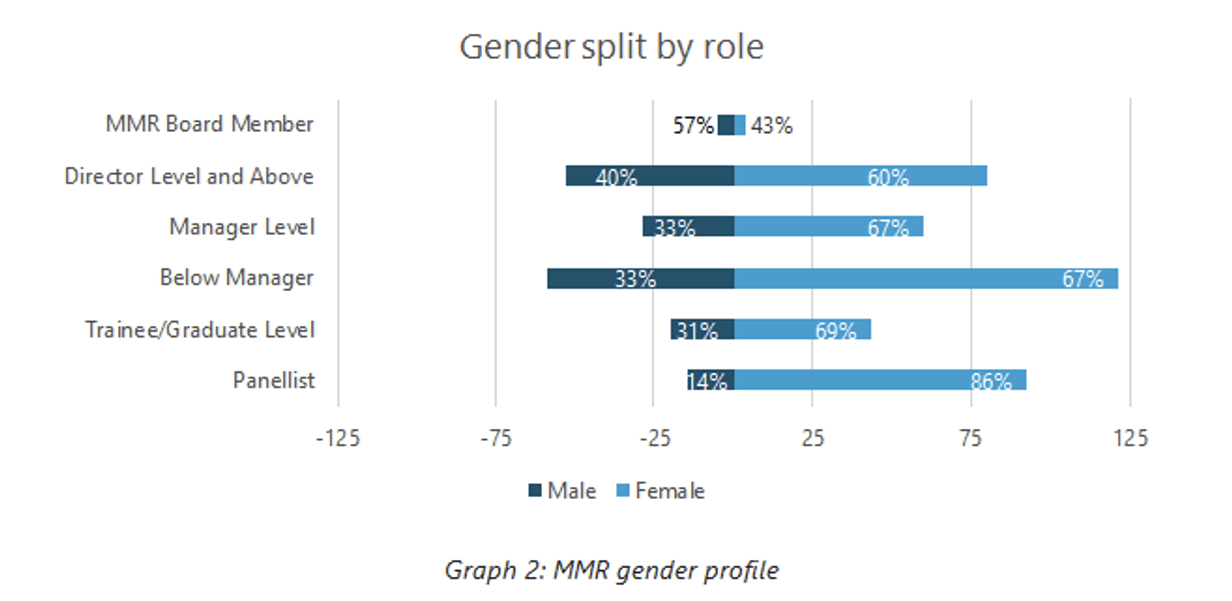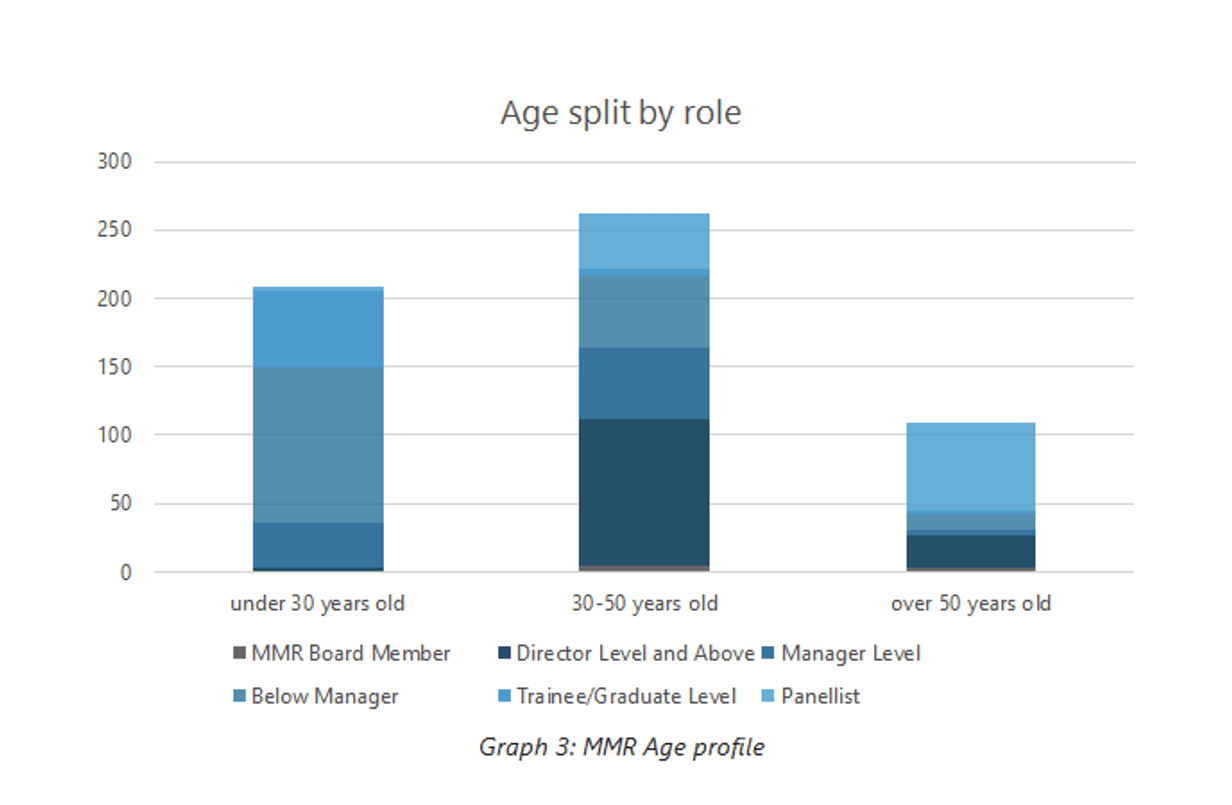MMR Environment, Social and Governance (ESG) Strategy
FY24-FY26
Introduction
MMR is a family owned global marketing/market research business that has grown significantly in recent years, now employing over 1000+ staff and contractors located in nine countries.
As part of our overall business strategic objectives, we have formalised our approach to ESG (environmental, social and governance) to ensure that we meet increasing societal and investor expectations, play our part in mitigating global warming and provide a framework to drive forward the company’s progress in this area.
This document sets out MMR’s ESG strategy which includes our key climate change, EDI (equity, diversity & inclusion) and governance actions from now to 2026 and targets for this timeframe and beyond. The plan covers both MMR Research Worldwide and the wider MMR family. The targets and progress toward them will be reviewed annually.
External ESG Frameworks
Our ESG strategy aligns with, and supports delivery of the aspirations of key ESG organisations. This includes:
1. UN Sustainable Development Goals
The 17 UN Sustainable Development Goals (SDGs) are a global vision for a more sustainable world. We wish to play our part in their delivery and our strategy presented here is structured specifically to address the following three SDGs:
Target 5.5: Ensure women’s full and effective participation and equal opportunities for leadership at all levels of decision-making in political, economic and public life. | Target 8.5: By 2030, achieve full and productive employment and decent work for all women and men, including for young people and persons with disabilities, and equal pay for work of equal value. | Target 13.2: Integrate climate change measures into national policies, strategies and planning. |
Indicator 5.5.2: Proportion of women in managerial positions. | Indicator 8.5.1: Average hourly earnings of female and male employees, by occupation, age and persons with disabilities. | Indicator 13.2.2: Total greenhouse gas emissions per year. |
Our commitment: To continue to increase the representation of women in leadership levels. Our global Board is 50/50 male/female. We endorse the Women’s Empowerment Principles. | Our commitment: To ensure the availability of a skilled workforce through ongoing training and development opportunities and provide an inclusive workplace for all. | Our commitment: To measure, report and reduce our GHG emissions with the goal of achieving Net Zero by 2050. |
See strategy Pillar 3: Equity, Diversity & Inclusion | See strategy Pillar 3: Equity, Diversity & Inclusion | See strategy Pillar 2: Climate Change |
We are committed to upholding the Ten Principles of the UN Global Compact which we see as a minimum standard of sustainability in relation to human rights, labour standards, anti-corruption and environment. The principles have been embedded in this strategy.
3. Science-Based Target Initiative (SBTi)
We recognise the important work the SBTi do to define adequate greenhouse gas emission reduction targets (i.e. those that will limit temperature increases to 1.5 degrees Celsius) and we have set a scope 1 and 2 near-term reduction target aligned with the technical definition and standards of the SBTi, as well as a scope 1, 2 & 3 Net Zero goal for 2050.
MMR’s ESG Framework
Our sustainability/ESG approach is centred around three pillars that form our priority issues.

Pillar 1. Governance and Reporting
Our Board recognises the importance of maintaining high standards of corporate governance and is committed to fostering a culture of integrity across our business.
All our global business operations will be required to align to the goals set out in the strategy.
Current Approach
The MMR Board is ultimately responsible for our ESG strategy. This responsibility is discharged to the ESG Exec Group, which is sponsored by our Global CEO and chaired by the Chief Growth & Marketing Officer. Responsibility for delivery of the ESG strategy at pillar level is led by appointed Senior Executives.
Targets and Delivery Plan
Goals and Target | Delivery Date |
GOAL: We will establish clear roles, responsibilities and accountabilities for sustainability and delivery of this strategy. | FY24 |
GOAL: We will become a signatory of the UN Global Compact | FY25 |
GOAL: We will create a separate ESG section on our website, incorporating key ESG policies, goals and metrics. | FY26 |
To deliver these targets over the next three years we will action the following:
1. We will allocate appropriate resources to our ESG programme
- We will appoint senior executives to be responsible for each pillar of the ESG programme.
- We will establish the ESG Exec Group with formal Terms of Reference which will be made publicly available.
- We will monitor ESG Strategy progress on a regular basis at the board level and we will report publicly on progress against the objectives and targets on our website.
2. We will integrate ESG into the business
- We will review our ESG policies, identify gaps and ensure key policies are publicly available on our company website.
- We will integrate ESG policies into the business through communication, training and confirmation statements.
- We will become a signatory of the UN Global Compact UK by FY25.
- We will embed this strategy into our standard business practices such as induction process, employee surveys, business updates and the intranet.
3. We will incentivise delivery of our ESG Strategy
- We will incorporate ESG goals into performance objectives for employees involved in the strategic delivery of the ESG Strategy.
4. We will inform and engage with stakeholders on our ESG approach
- We will create a separate ESG section within our website.
- We will prepare a communication plan for sustainability and implement this across our stakeholder groups.
Pillar 2. Climate Change
As a market research company with limited physical resources our overall environmental impact is low. Regardless, we recognise the potential dramatic societal and environmental risks of climate change and are committed to measuring and mitigating our impacts in this area, both direct (scope 1 and 2) and indirect (scope 3).
Current Approach
Through the MRS Net Zero Pledge we have affirmed our commitment to climate change mitigation and in 2023 we conducted our first full assessment of MMR’s direct (scope 1 and 2) and indirect (scope 3) GHG emissions. Total GHG emissions for FY23 were 2,582 tCO2e. Direct energy use from electricity and gas was 2,502GJ, 434GJ of which (17%) was from renewable energy sources.
Scope 1, 2 & 3 emissions for FY23 (target baseline)
Emission source | tCO2e |
Scope 1 (gas) | 36 |
Scope 2 (electricity, market-based method) | 152 |
Scope 3 category 1 (purchased goods and services) | 1,078 |
Scope 3 category 3 (fuel- & energy- related) | 140 |
Scope 3 category 5 (waste) | 2 |
Scope 3 category 6 (business travel) | 543 |
Scope 3 category 7 (commuting) | 400 |
Scope 3 category 7 (working from home) | 232 |
TOTAL scope 1, 2 & 3 emissions | 3,074 |
Emissions were measured by an independent carbon specialist, Rawstone Consulting, in accordance with the GHG Protocol Corporate Standard operational consolidation (control) approach. Emissions from carbon dioxide, methane and nitrous oxide were calculated using emission factors sourced from UK Government Conversion factors for 2023 and CEDA. All relevant emission categories were included, as were emissions associated with working from home, which are optional under the GHG Protocol but included due to their significance (7% of total emissions).
For business travel, all emissions have been included in scope 3, category 6, however a very small proportion of these will relate to business travel in company owned/leased vehicles, including electric vehicles. Existing data collection practices do not allow for these to be separately identified, and steps will be taken to isolate these emissions for reporting in scope 1 and 2 next year.

Targets and Delivery Plan
Targets and Delivery Plan
Goals and Target | Delivery Date |
TARGET: 42% reduction in scope 1 and 2 emissions against the FY23 baseline. | FY30 |
TARGET: Carbon neutral operations (scope 1 and 2) | FY24 |
TARGET: 90% scope 1,2 & 3 emission reduction | FY50 |
TARGET: Net Zero scope 1, 2 & 3 emissions | FY50 |
As signatories of the MRS Net Zero Pledge, we have previously committed to achieve Net Zero by 2028. When the Pledge was developed (June 2021) there was no definition of Net Zero, however since then the Science-Based Target initiative (SBTi) has produced the now established definition of Net Zero. The SBTi Net Zero Standard requires a 90%+ emission reduction across scope 1, 2 and 3 emissions before removal of residual emissions. These scientifically based parameters are internationally recognised as the benchmark necessary to limit global warming. As such, we want to align with this more demanding Standard, but recognise that doing so is not possible within the timeframes of the Pledge. For this reason, we have extended our Net Zero target to FY50, to cover all scopes, and also to include a 90% emission reduction goal.
Our long-term goals are coupled with a scope 1 and 2 interim reduction target (FY30), the parameters for which are aligned with SBTi guidance in this area.
To deliver our GHG emission reduction targets over the next three years we will action the following:
5. We will measure, manage and report on our key environmental impacts and encourage others to do the same
- We will formalise our climate change commitments and policies in an Environment, Energy and Climate Change Policy.
- We will publish our GHG emissions annually and take steps to continually improve and enhance the accuracy of our emissions measurement.
- We will engage and influence our customers on climate change mitigation.
6. We will reduce our energy consumption
- We will reduce our direct energy use through data monitoring and behavioural change.
- We will integrate energy performance considerations into all significant energy-related purchases.
- We will take steps to reduce our international travel, and to transition to lower carbon modes of transport.
7. We will switch to low and zero carbon energy sources
- We will switch electricity supplies to zero-carbon sources where possible.
- We will explore opportunities to transition our building heating systems to low-carbon alternatives in offices which we own.
- We will enable and encourage the use of electric vehicles by employees through the installation of electric charging points.
8. We will neutralise our operational GHG impact
- We will invest in high quality and certified carbon offsets to become carbon neutral for scope 1 & 2 emissions by FY24.
Pillar 3. Equity, Diversity and Inclusion (EDI)
We recognise the importance of embedding equity, diversity and inclusive values into everything we do to ensure a skilled workforce with diversity of thought and a workplace characterised by inclusive practices and behaviours for the benefit of all staff. We are committed to a non-discriminatory approach and provide equal opportunity for employment and advancement in all of our teams, programs, and locations. In our latest 2023 Employee Engagement survey, 85% of respondents said they can be their authentic self at work, and 80% of respondents felt that people from all backgrounds have equal opportunities to succeed at MMR.
MMR has a dedicated EDI Lead and Programme Ambassadors in place across the organization.
Current Approach – EDI Data
MMR is committed to promoting equal opportunities in employment. Currently we measure and monitor both gender diversity and age globally, although we recognise that diversity is far broader than this and we will look to expand our EDI data going forward.
Our global workforce is currently 69% women and 31% men for those whose gender choice is binary. Our Global Board is made up of 5 males and 4 females. At all other levels, including director level and above, females outweigh males (see Graph 2). Last year, 71% of all promotions were female.

From an age perspective, overall our workforce is relatively young, with 81% under 50 years of age (see Graph 3). As expected, there are more senior positions at senior ages but there are still some senior positions filled by those under 30 (33 managers and 3 directors or above), and some less senior and trainee positions are filled by those over 50 years of age.

Targets and Delivery Plan
Goals and KPI’s | Delivery Date |
GOAL: We will elevate our EDI Programme to a strategic level within our global operations and publicly report our commitment and ongoing progress | FY24 |
GOAL: We will align to a globally recognised EDI accreditation, demonstrating continual improvement | FY25 |
TARGET: We will continue to work to build a culture of inclusivity across our global operations, tracking and improving our ‘I can be my authentic self’ question in our annual employee survey (2023 - 85% positive answer). | FY26 |
To deliver these targets over the next three years we will action the following:
9. We will demonstrate our commitment to EDI and collaborate with others to advance EDI in the industry
- We will publish an EDI policy aligned to our EDI objectives.
- We look to work collaboratively with our clients and brands to adopt inclusive design best practice.
10. We will expand our D&I measurement and reporting
- We will analyse our existing data and insights to pull out key data points and areas of focus.
- We aim to expand our workforce EDI data capture to include other protected characteristics as well as gender and age.
- We will make available our EDI metrics publicly and this will form the baseline against which we will measure future success.
- We will align to a nationally recognised EDI accreditation.
11. We aim to provide an inclusive global workplace for all
- We will review our wider workplace policies and practices to ensure they respect and enable EDI.
- We will combine a global EDI ethos with a local approach to ensure we reflect and respect local differences.
- We will review our hiring approach with the aim of increasing the diversity of candidates for all positions, including senior leadership roles.
- We will embed the EDI strategy across our operations, supporting our leadership teams to build a culture of inclusivity and belonging.